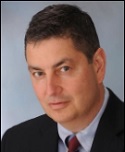By Pam Martens and Russ Martens: March 17, 2021 ~
Sal Arnuk co-founded Themis Trading in 2002 with Joe Saluzzi. In 2012 they wrote the book Broken Markets: How High Frequency Trading and Predatory Practices on Wall Street Are Destroying Investor Confidence and Your Portfolio. The rigging of Wall Street has only grown worse since that time.
Having a professional trader such as Arnuk provide an insider’s analysis of how Robinhood, which accepts retail stock orders and then sells the majority of them to high frequency trader, Citadel, in exchange for payment-for-order flow (PFOF), is just who Congress needs to hear from.
Arnuk, according to his written testimony, will tell the House Financial Services Committee the following at a hearing scheduled for today:
“Robinhood does something very novel; they combine investing/trading tools with a social media experience targeted to young people – complete with trading addiction, and a herding effect. They have amassed a user base whose orders tend to be small; for example, Robinhood’s average account size is about $5000, compared with TD Ameritrade’s $110,000.
“As such, they have created a unique product –small emotion-driven orders that tend to be predictable, which they can then sell to their real customers – HFT [High Frequency Trading] market making firms, at a premium. If you think this claim is bombastic, consider that:
“1) Prior to starting Robinhood the founders developed HFT platforms for ‘the largest financial institutions in the world.’
“2) They recently changed their PFOF [payment-for-order-flow] method from one giving them a set payment per share to one giving them a percentage of the spread instead. Think about this: A Robinhood trader wants the spread in the stocks he/she is trading to be as narrow as possible. The HFT market maker buying those orders benefit most when that spread is as wide as possible. And now Robinhood benefits most when the spread is as wide as possible as well! This is an amazing misalignment of interests.
“3) Robinhood turned down market-maker offers of PI [price improvement] for its App users, opting for a larger payment for its own bottom line instead.
“4) Robinhood has garnered a $13–$20 billion valuation with its largest revenue source being PFOF, which means that its founders’ personal wealth is driven by more customer trading and more PFOF, even if such trading is potentially not in the best interest of its customers.
“This tells you Robinhood knows full well the value of its herded and gamified product base; they knew to educate their users just enough to incentivize trading and maximize their own revenue as a result of it…
“The incentive that has enabled their model is none other than PFOF.
“When investors make a trade, they incur costs both explicit and implicit. PFOF may enable zero commissions, but while that explicit cost is zero, other larger implicit costs dwarf it.
“While PFOF is legal, we have long wondered how it possibly could be. How can a broker, charged with the duty of getting its clients the best available prices, possibly do so by selling that client’s orders to amazingly sophisticated HFT firms, who in turn will make billions of dollars trading against these orders?
“While retail brokers and market making firms claim that price improvement (PI) accrues to retail investor orders, such price improvement is a flawed calculation:
“1) It is based off of a slower price feed (the SIP),
“2) It does not take into account odd-lots,
“3) And the NBBO reference price it uses is largely set by the very same HFT market makers providing the ‘PI’ in the off-exchange environment.
“Regulators know all this. The SEC recently fined Citadel $22 million for mishandling retail orders. They also recently fined Robinhood $65 million [for] failing its best execution responsibilities. They know that the concept of PI is flawed; they approved a huge market structure change which included odd-lots in the SIP, and protected them as a quote. Yet our industry sued the SEC to block this overhaul.”
Read Arnuk’s full, blistering testimony of the rigging of Wall Street against the little guy here.


